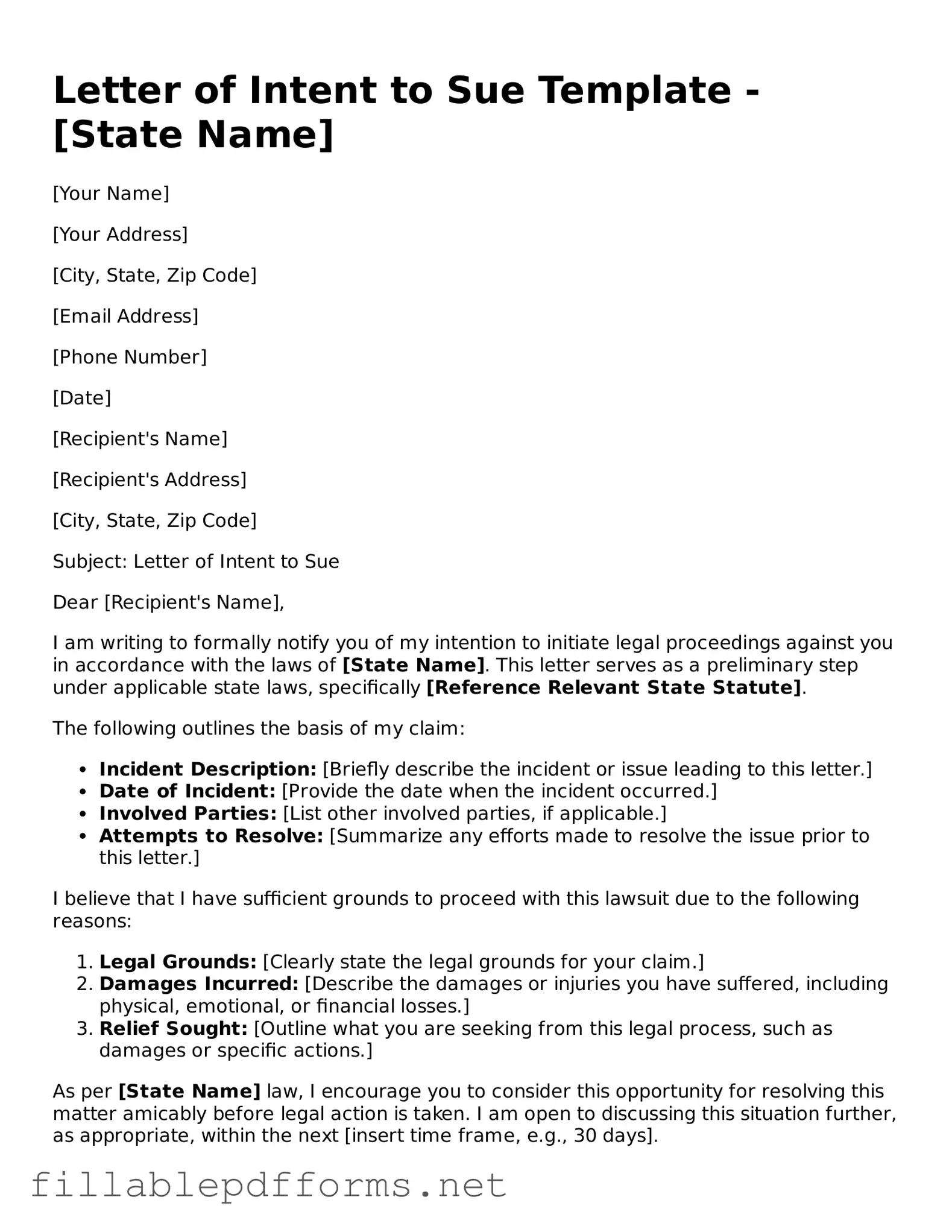When a dispute arises and resolution seems elusive, a Letter of Intent to Sue can serve as a crucial first step in the legal process. This document, often sent before formal litigation begins, signals to the other party that you are serious about pursuing your claims. It typically outlines the nature of the dispute, the specific grievances, and the relief or compensation sought. By clearly stating your intentions, this letter can encourage the other party to engage in negotiations or settlement discussions, potentially saving both parties time and money. Additionally, including a deadline for a response can create a sense of urgency, prompting a quicker resolution. Understanding the components of this letter—such as the factual background, legal basis for the claim, and any relevant documentation—can empower individuals to articulate their position effectively. While it may seem like a simple formality, a well-crafted Letter of Intent to Sue can lay the groundwork for a more formal legal action, should that become necessary.
